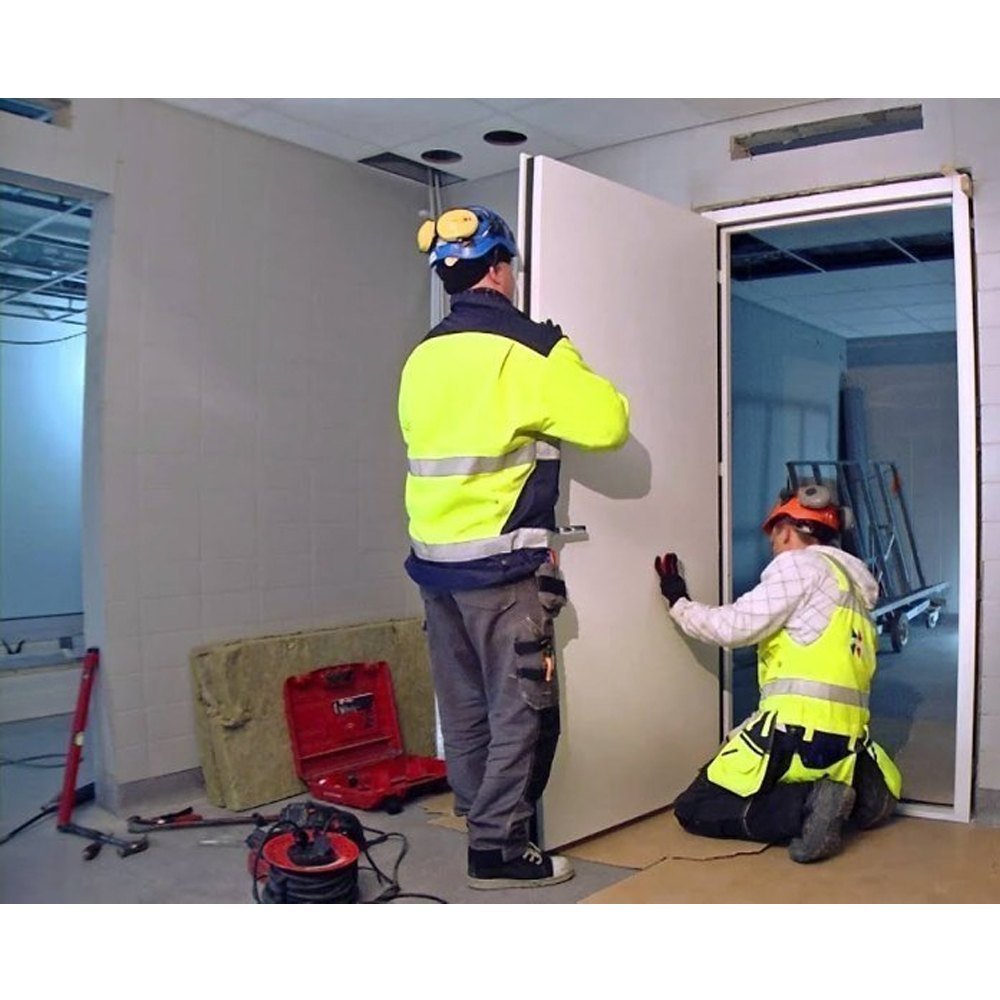When it comes to ensuring building safety, few elements are as critical yet often overlooked as fire doors. These specialized doors are designed to resist the spread of fire and smoke, giving occupants valuable time to escape and helping minimize damage. However, to remain effective, they must be regularly inspected, maintained, and repaired. This is where fire door maintenance plays an essential role.
In this post, we’ll explore what fire doors are, why maintenance matters, how often it should be done, and what it involves. Whether you manage a commercial building, oversee a residential complex, or own industrial property, understanding the basics of fire door maintenance can be the difference between safety and disaster.
What Is a Fire Door?
A fire door is a specially constructed door, often made from materials like steel or solid-core timber, designed to withstand fire for a specified time period—typically 30, 60, or 120 minutes. Fire doors are a key part of a building’s passive fire protection system, helping to compartmentalize fire and limit its spread.
They are usually installed in strategic areas such as stairwells, corridors, and between different sections of a building. When installed and maintained correctly, fire doors help:
-
Delay the spread of fire and smoke
-
Protect escape routes
-
Ensure safe evacuation
-
Minimize structural damage
-
Comply with fire safety regulations
However, a poorly maintained fire door can fail in a fire situation, rendering it useless. That’s why fire door maintenance isn’t just a best practice—it’s a legal and ethical responsibility.
Why Is Fire Door Maintenance Important?
-
Life Safety
A functioning fire door can be the difference between life and death in an emergency. Proper fire door maintenance ensures the door closes fully, latches correctly, and provides the barrier it was designed to offer. -
Regulatory Compliance
In many regions, fire doors are required by law in commercial and multi-unit residential buildings. Regular maintenance helps ensure your property complies with fire safety standards, reducing the risk of fines, shutdowns, or legal issues. -
Insurance Requirements
Insurance providers often require that all fire safety equipment, including fire doors, be properly maintained. Failure to do so could result in denied claims in the event of a fire. -
Long-Term Cost Savings
Routine fire door maintenance helps catch small issues before they become costly repairs or replacements. It also extends the life of the door system.
Common Fire Door Maintenance Tasks
-
Visual Inspection
Check for any visible damage to the door, frame, and hardware. Look for cracks, holes, warping, or signs of tampering. -
Checking the Certification Label
Fire doors should have a certification label or plug that confirms their fire-resistance rating. Ensure it’s intact and legible. -
Testing the Self-Closing Device
The door must close and latch fully on its own without assistance. This mechanism is critical in a fire event and must function properly. -
Inspecting Intumescent Seals
These seals expand when exposed to heat, sealing gaps to prevent smoke and flames from passing through. Ensure they’re undamaged and present around the door frame. -
Examining Hinges and Hardware
Loose or missing screws, rust, or wear and tear can prevent the door from operating correctly. All hardware should be in excellent working condition. -
Assessing Door Gaps
The gap between the door and the frame should generally be no more than 4mm. Larger gaps compromise the door’s ability to resist fire. -
Checking Signage
Fire doors must have appropriate signage such as “Fire Door – Keep Shut.” Make sure it is clearly visible and securely attached.
How Often Should Fire Door Maintenance Be Carried Out?
Fire door maintenance frequency depends on the type of building, volume of traffic, and local regulations. However, general guidelines include:
-
Monthly Visual Inspections for high-traffic areas
-
Quarterly or Biannual Inspections by a trained professional
-
Annual Full Fire Door Surveys conducted by certified fire safety experts
In any case, a documented fire door maintenance schedule should be established and followed diligently.
Who Should Perform Fire Door Maintenance?
While basic inspections can be carried out by trained in-house staff, comprehensive maintenance and repairs should always be done by qualified professionals. These experts are trained to recognize issues that might not be obvious to the untrained eye and can ensure the door complies with all applicable fire codes.
When hiring a contractor for fire door maintenance, make sure they are:
-
Certified and experienced in fire safety systems
-
Familiar with local and national fire safety regulations
-
Capable of providing a full inspection report
-
Equipped to perform repairs or replacements if needed
Consequences of Neglecting Fire Door Maintenance
Neglecting fire door maintenance can lead to serious consequences:
-
Legal liability if injuries or fatalities occur due to faulty fire doors
-
Insurance complications, including denied claims
-
Fines or sanctions from fire safety authorities
-
Increased risk of property loss in the event of a fire
-
Damage to reputation, especially for businesses and landlords
Given these risks, it’s easy to see why fire door maintenance should be a top priority for property owners and managers.
Fire Door Maintenance Best Practices
-
Create a Maintenance Log
Keep detailed records of all inspections, repairs, and replacements. This is essential for compliance and audit purposes. -
Educate Occupants and Staff
Make sure everyone in the building understands the importance of keeping fire doors closed and not propping them open. -
Schedule Regular Professional Inspections
Set reminders for periodic inspections by certified professionals. Don’t wait for a fire marshal visit to discover problems. -
Replace Damaged Doors Promptly
If a fire door is damaged beyond repair, don’t delay in replacing it with a certified fire-rated alternative. -
Coordinate with Fire Safety Plans
Ensure your fire door maintenance schedule aligns with your broader fire safety and evacuation plans.
Final Thoughts
Fire doors are a cornerstone of any building’s fire protection strategy, but they are only effective when properly maintained. Investing time and resources in fire door maintenance is not only a legal requirement but also a moral responsibility. By doing so, you’re actively contributing to the safety of your building’s occupants and minimizing risk in the event of a fire.
Whether you’re managing a hospital, school, office, or residential complex, never underestimate the power of a well-maintained fire door. It could save lives.














Leave a Reply